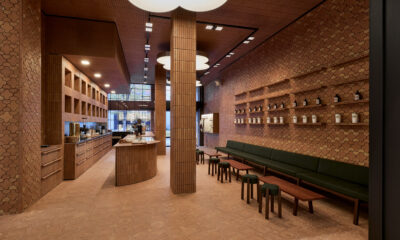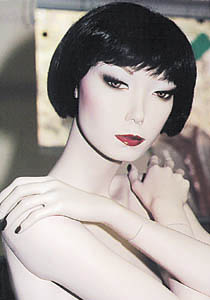Ignaz Gorischek of Neiman Marcus said something I'd never heard anyone in this business admit.
Speaking to VM+SD's Anne DiNardo about his new Coral Gables, Fla., store (see page 30), the retailer's vp of visual planning and presentation said, “We want people to get as excited about the vehicle on which we are presenting merchandise as they do about the product.”
Is that not heresy? For years, store design people have repeated the mantra: “The design should be invisible. We want shoppers to see the merchandise.”
Ignaz also told Anne: “We do not merchandise every corner, every square inch. We leave negative space around merchandise. It's about the whole experience at Neiman Marcus.”
You've got to love Neiman Marcus. When so many other retailers are struggling to figure out who they are or want to be, the luxe Dallas-based specialty chain plots its unchanging course and cruises straight ahead.
Advertisement
It knows who its customers are and what they expect. It does not seem to compromise. And it doesn't seem to bend to whims or trends á la mode. If it messes with its formula, it may lose its core shopper and not get her back when the economy turns around.
Ah, that turning economy! It was certainly one of the reasons for the disappointing 2002 Christmas season (along with threat of war and lousy weather). But one article I read insisted that shoppers are bored and retailers are caught in an identity crisis. Or, as The New York Times said in early January, “Seen a Store, Seen Them All.”
“Shoppers cannot tell one store from another,” said the article.
“It's the pressure on the bottom line,” said retail veteran Marvin Traub. “[The edge is off] the creativity and excitement of fashion.”
Kohl's and Target have become analysts'darlings for dealing with this shopping miasma. It has become a cliché how these two middle-market retailers, above everyone else, create brands and stores that are efficient and successful, and frequently more elegant than their images would suggest.
So the newspaper did some comparative analysis:
Advertisement
Kohl's “may have found an ideal formula, which combines a specialty store environment with a down-and-direct price-cutting strategy… but a few analysts wonder if it will lose its niche as it is squeezed from above (by Lord & Taylor, Nordstrom marking goods down even below Kohl's prices) and below (Wal-Mart, Target featuring better apparel than ever before).”
Target “risks alienating its core customers unless it makes the company look as chic as its ads… some analysts say the stores really do not look all that different from Kmarts.”
Neiman Marcus “has done the best job of keeping core customers. Unlike many other stores, which fell over backwards trying to be hip or cheap, or both, Neiman's kept its luxury shopper. Executives boasted that their stores had fewer marked-down goods than others. They've got a terrific customer base.”
And, in a very difficult February, Neiman's same-store sales jumped 2.5 percent. Kohl's fell 6.4 percent and Target dropped 1.4 percent (though that included Mervyn's and Marshall Field's).
There's no doubt that retail – and the luxury market in particular – has flagged. But as other retailers flail around trying to reposition themselves, Neiman's placidly stays in its lane. If we're in the midst of a retail branding craze, others can learn from Neiman Marcus. It knows who it wants to be when it grows up.


 Headlines1 week ago
Headlines1 week ago
 John Ryan2 weeks ago
John Ryan2 weeks ago
 Headlines1 week ago
Headlines1 week ago
 Headlines2 weeks ago
Headlines2 weeks ago
 Headlines2 weeks ago
Headlines2 weeks ago
 Retail Buzz3 days ago
Retail Buzz3 days ago
 Headlines1 week ago
Headlines1 week ago
 Headlines2 weeks ago
Headlines2 weeks ago
















